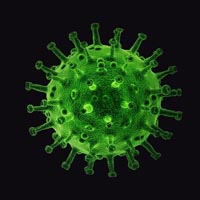Consider differentials before diagnosing COVID-19 associated polyradiculitis

Accepted: 23 December 2021
HTML: 4
All claims expressed in this article are solely those of the authors and do not necessarily represent those of their affiliated organizations, or those of the publisher, the editors and the reviewers. Any product that may be evaluated in this article or claim that may be made by its manufacturer is not guaranteed or endorsed by the publisher.
Evidence is accumulating that SARS-CoV-2 infections and SARS-CoV-2 vaccinations can induce Guillain-Barre syndrome (GBS). More than 400 GBS cases after SARS-CoV-2 infection respectively vaccination have been reported as per the end of 2021. GBS is usually diagnosed according to the Brighton criteria, but also the Besta criteria or Hadden criteria are applied. The diagnosis can be supported by MRI with contrast medium of the cranial or spinal nerves showing enhancing nerve roots. As GBS can be complicated by autonomic dysfunction such as pupillary abnormalities, salivatory dysfunction, reduced heart rate variability, bowel disturbance (constipation, diarrhea), urinary hesitancy, urinary retention, or impotence, it is crucial to investigate GBS patients for autonomic involvement. Before diagnosing GBS various differentials need to be excluded, including neuropathy as a side effect of the anti-SARS-CoV-2 medication, critical ill neuropathy in COVID-19 patients treated on the ICU, and compression neuropathy in COVID-19 patients requiring long-term ventilation.
Darvishi M, Shahali H, Farahani AA. Guillain-Barré Syndrome Associated with SARS-CoV-2 Infection: A Case Report. Eur J Transl Myol. 2021 Aug 31. DOI: https://doi.org/10.4081/ejtm.2021.9494
Finsterer J, Scorza FA. Guillain-Barre syndrome in 220 patients with COVID-19. Egypt J Neurol Psychiatr Neurosurg. 2021;57(1):55. DOI: https://doi.org/10.1186/s41983-021-00310-7
Akçay N, Menentoğlu ME, Bektaş G, Şevketoğlu E. Axonal Guillain-Barre syndrome associated with SARS-CoV-2 infection in a child. J Med Virol. 2021 Sep;93(9):5599-5602. DOI: https://doi.org/10.1002/jmv.27018
Uncini A, Vallat JM, Jacobs BC. Guillain-Barré syndrome in SARS-CoV-2 infection: an instant systematic review of the first six months of pandemic. J Neurol Neurosurg Psychiatry. 2020 Oct;91(10):1105-1110. DOI: https://doi.org/10.1136/jnnp-2020-324491
Finsterer J, Scorza FA, Scorza CA, Fiorini AC. Peripheral neuropathy in COVID-19 is due to immune-mechanisms, pre-existing risk factors, anti-viral drugs, or bedding in the Intensive Care Unit. Arq Neuropsiquiatr. 2021 Jul 19:S0004-282X2021005016201. DOI: https://doi.org/10.1590/0004-282x-anp-2021-0030
Mateen FJ, Cornblath DR, Jafari H, Shinohara RT, Khandit D, Ahuja B, Bahl S, Sutter RW. Guillain-Barré Syndrome in India: population-based validation of the Brighton criteria. Vaccine. 2011 Dec 6;29(52):9697-701. DOI: https://doi.org/10.1016/j.vaccine.2011.09.123
PAGEPress has chosen to apply the Creative Commons Attribution NonCommercial 4.0 International License (CC BY-NC 4.0) to all manuscripts to be published.


 https://doi.org/10.4081/ejtm.2022.10111
https://doi.org/10.4081/ejtm.2022.10111



